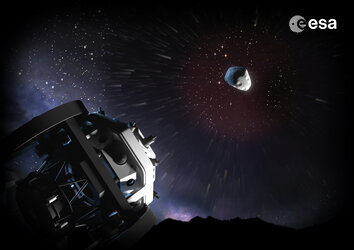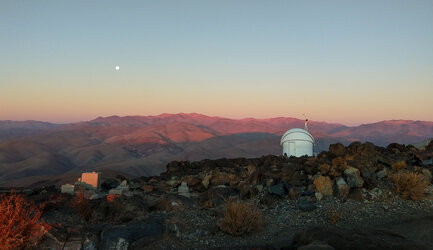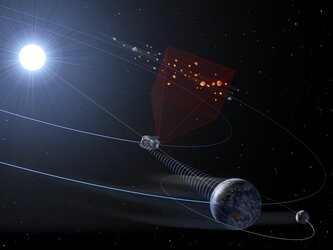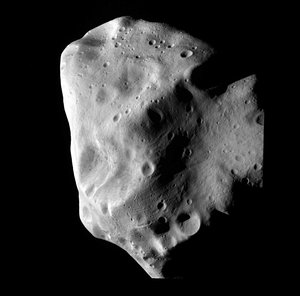Asteroids and Planetary Defence
Asteroids are ancient space rocks left over from the formation of the Solar System. They are thought to have brought complex molecules, and possibly early life, to Earth billions of years ago. Today, our planet's current inhabitants must learn how to keep themselves safe from any future impacts.
The Chicxulub asteroid is probably the most famous space rock in the world. Although you may not know its name, its impact 66 million years ago is legendary – causing a mass extinction event that saw most non-flying dinosaurs and many other species wiped out.
Impacts from such large asteroids are immensely rare, but small- and medium-sized rocks are far more common in the Solar System and can still do serious damage.
These asteroids sometimes reach the ground, but even those that disintegrate in Earth’s atmosphere – like the one that caused the Chelyabinsk event in 2013 – can create explosive airbursts, with resulting shockwaves that may shatter glass, damage buildings and injure anyone who happens to be nearby.
The term ‘near-Earth object’ (NEO) refers to any natural object, like an asteroid, whose orbit brings it close to Earth. As of November 2024, we knew of more than 1 200 000 asteroids in our Solar System. Of these, over 36 000 are near-Earth objects, around 1700 of which are in ESA's risk list, meaning that they merit close follow-up observations.

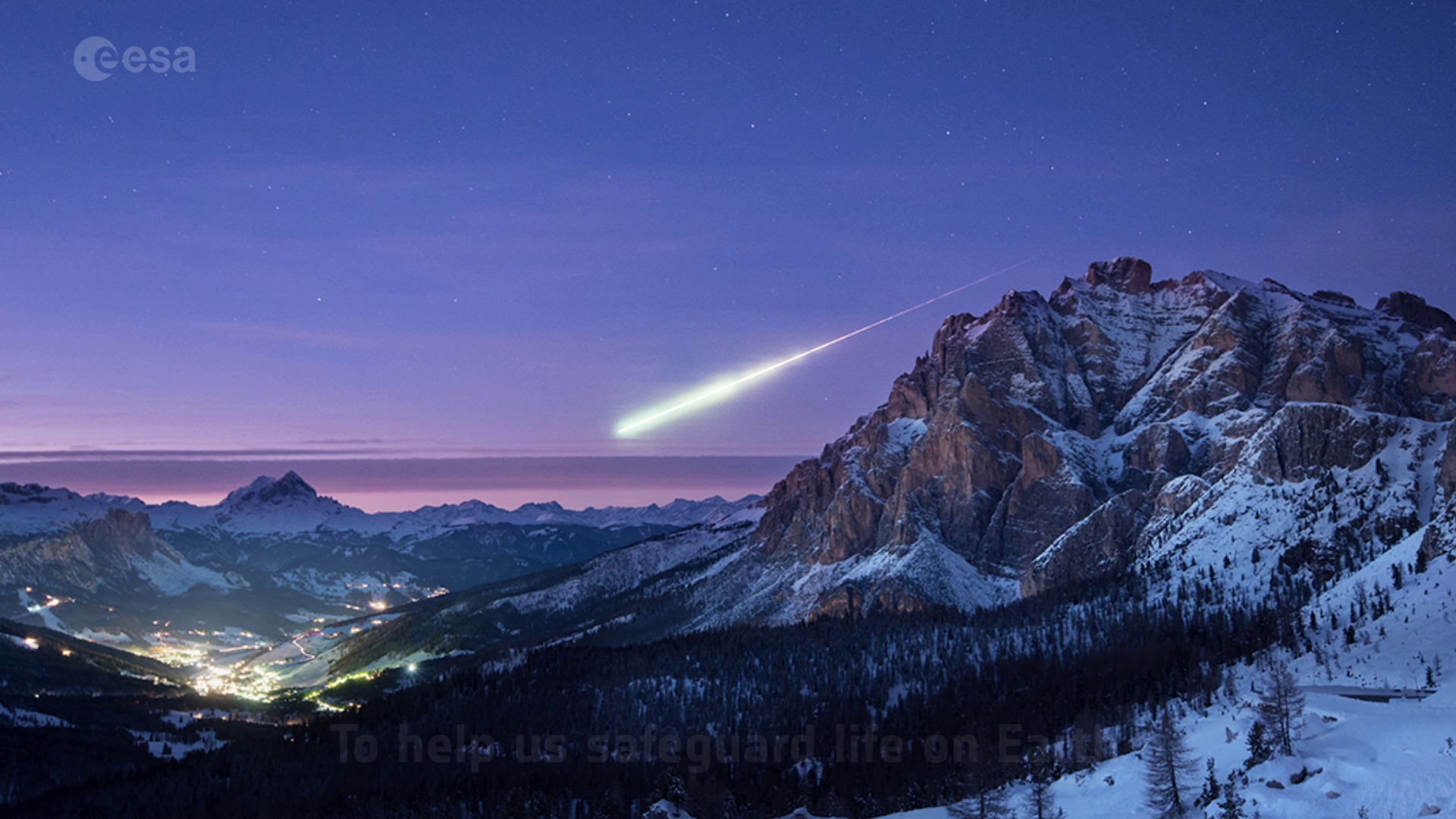
Access the video
Planetary Defence Office
ESA's Planetary Defence Office is an essential element of the Agency's Space Safety programme. The goals of the Office are to:
- Understand the current and future position of near-Earth objects relative to our planet
- Estimate the likelihood of Earth impacts
- Assess the consequences of any possible impact
- Inform relevant parties such as national emergency response agencies
- Develop methods to deflect hazardous asteroids away from Earth
The Planetary Defence Office conducts regular observation campaigns to search the sky for potentially hazardous asteroids, calculates and predicts their orbits, produces impact warnings when necessary and is involved in potential mitigation measures. The office divides its work into three areas:
1. Observation
2. Data provision
3. Mitigation
1. Observation
In order to become aware of the current and future position of near-Earth objects relative to our planet, we need eyes on the sky, scanning for potentially hazardous space rocks.
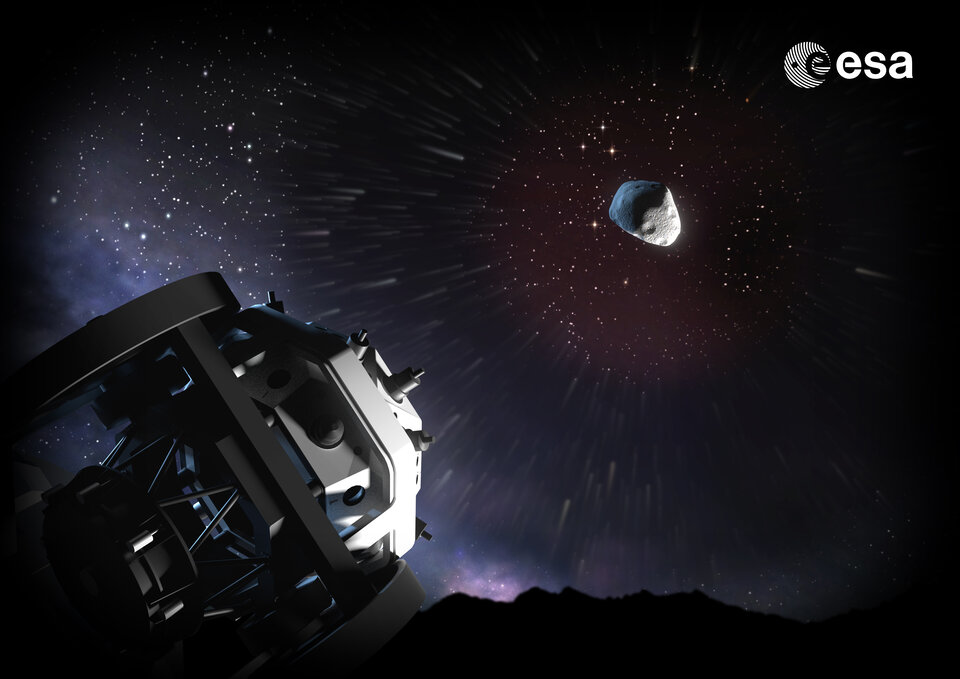
Flyeye telescope network
Every night, ESA’s planned network of Flyeye telescopes will scan the skies for rogue rocks, automatically flagging any that pose an impact risk and bringing them to the attention of human researchers.
Similar to the technique exploited by a fly’s compound eye, these bug-eyed telescopes split each image into 16 smaller subimages, increasing the total amount of sky that can be observed and expanding the ‘field of view’. By placing telescopes in the Northern and Southern hemispheres, the entire sky can be scanned within 48 hours.
Test-Bed Telescopes
Two 56-cm 'Test-Bed Telescopes' (TBTs) are primarily used to test the data processing currently being developed for the Flyeye telescopes. One telescope is located in Madrid, and another at La Silla Observatory in Chile at ESA’s partner organisation, the European Southern Observatory (ESO).


Access the video
Neomir satellite
Asteroids, like stars, only come out at night. Hidden in the glare of our Sun are an unknown number of asteroids on paths we cannot track, any of which could be heading for Earth, and we wouldn't know. ESA’s planned Neomir spacecraft will be located between Earth and the Sun. Using its onboard telescope, it will watch search the daytime sky for the infrared light emitted by asteroids, which is not obscured by the brightness of our star. In doing so, it will act as an early warning system for hazardous asteroids 20 metres and larger that cannot be seen from the ground.
Optical Ground Station
ESA's Optical Ground Station in Tenerife is equipped with a 1 m-diameter telescope and is the major optical facility used by ESA to follow up asteroid observations. It is typically used for four nights around new Moon for near-Earth object observations.
Sponsoring European observations
In addition to the Agency's own Test Bed Telescopes and Optical Ground Station, ESA operates the Schmidt telescope at the Calar Alto observatory in Spain for near-Earth object observations. ESA astronomers also have access to dedicated time on the Las Cumbres Observatory and 6ROADS telescope networks, including the Zadko telescope in Australia, the HCT in India and the Les Makes telescope on La Reunion island.
ESA also sponsors other national telescopes in Europe, such as the Klet observatory in the Czech Republic and telescopes in Tautenburg, Germany. An ESA-ESO agreement provides access to ESO's Very Large Telescope for monitoring faint and urgent potential impactors.
2. Data Provision

Data on near-Earth objects and risky asteroids is collected from telescopes and radar systems worldwide. This treasure chest of information is then fed to the Minor Planet Center, operated with the help and support of the International Astronomical Union (IAU) at Cambridge, Massachusetts, USA. It acts as a central clearing house for asteroid and comet observations.
The measurements collected there are gathered by ESA's Near-Earth Object Coordination Centre (NEOCC), whose aim is to contribute to and coordinate observations of small bodies in the Solar System – such as asteroids, comets and even minor planets – and to evaluate and monitor the threat posed by any that come near Earth.
Based at ESA's ESRIN facility in Frascati, Italy, the NEOCC is the central access point to an entire network of European asteroid data sources and information providers. Every day, the coordination centre uses this information, gathered from across the globe, to provide orbit determination, impact monitoring, data provision and risk analysis.
3. Mitigation


Access the video
If an asteroid is determined to be potentially dangerous, emergency response agencies across the globe are informed of impact risk, and given support and advice from the NEOCC and other organisations.
Equipped with data on the small bodies in our Solar System and their chance of impacting our planet, the Planetary Defence Office is working to understand and mitigate these risks.
Space Mission Planning Advisory Group
ESA chairs the United Nations Space Mission Planning Advisory Group (SMPAG; pronounced ‘same page’). The group serves as a forum for the world’s space agencies and coordinates Earth’s space-based response to a potential impact.
It assesses the possibility of using spacecraft missions to study, deflect or destroy an incoming asteroid larger than 50 m in size and with an impact probability larger than 1 % and then provides decisionmakers with a recommended course of action.
The Hera mission
ESA’s first asteroid mission, Hera, launched on 7 October 2024. Named after the Greek goddess of marriage, Hera will be humankind’s first probe to rendezvous with a binary asteroid system – a little-understood class making up around 15% of all known asteroids.
Hera is the European contribution to an international double-spacecraft mission called AIDA. On 26 September 2022, NASA crashed its DART spacecraft into the smaller of the two bodies, Dimorphos, modifying its orbit around the primary asteroid, Didymos, by a small but measurable amount. Now, Hera is one its way to follow-up with a detailed post-impact survey that will turn this grand-scale experiment into a well-understood and repeatable planetary defence technique.
While doing so, Hera will gather crucial scientific data, helping scientists and future mission planners better understand asteroid compositions, structures and behaviours in response to a ‘kinetic impact’.
The Ramses mission to asteroid Apophis
There is still so much we have yet to learn about asteroids but, until now, we have had to travel deep into the Solar System to study them and perform experiments ourselves to interact with their surface.

However, on 13 April 2029, the 375 m asteroid Apophis will come to us, passing within 32 000 km from Earth’s surface. For a short time, it will be visible to the naked eye in clear, dark skies for around two billion people across much of Europe and Africa and parts of Asia.
ESA's proposed Ramses spacecraft would rendezvous with Apophis before it passes Earth and accompany the asteroid during the flyby to observe how it is warped and changed by our planet’s gravity.
By analysing how Apophis changes during the flyby, scientists will learn a lot about the response of an asteroid to external forces as well as asteroid composition, interior structure, cohesion, mass, density, and porosity.
These are all very important properties for assessing how best to knock a hazardous asteroid off a collision course with Earth. As asteroids are also time capsules formed over four billion years ago, data from Ramses will also offer new scientific insights into the formation and evolution of the Solar System.
Space safety at ESA
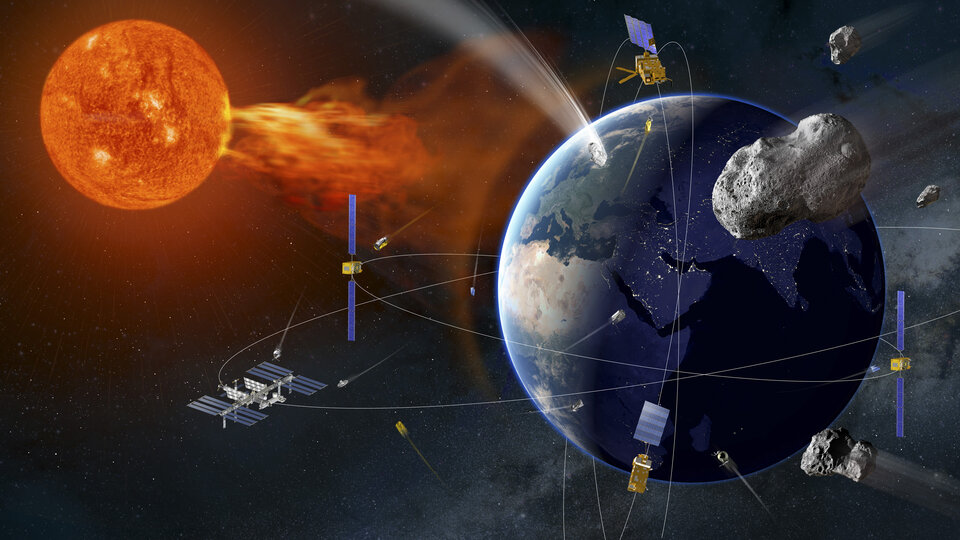
We live close to an active star, in a Solar System filled with ancient and fast-moving space rocks, on a planet that is becoming increasingly surrounded by discarded satellites and their debris.
ESA’s Space Safety Programme is working to mitigate and prevent the impacts of hazards from space, protecting our Pale Blue Dot, its inhabitants, and the vital infrastructure on Earth and in space on which we have come to depend.














 Germany
Germany
 Austria
Austria
 Belgium
Belgium
 Denmark
Denmark
 Spain
Spain
 Estonia
Estonia
 Finland
Finland
 France
France
 Greece
Greece
 Hungary
Hungary
 Ireland
Ireland
 Italy
Italy
 Luxembourg
Luxembourg
 Norway
Norway
 The Netherlands
The Netherlands
 Poland
Poland
 Portugal
Portugal
 Czechia
Czechia
 Romania
Romania
 United Kingdom
United Kingdom
 Slovenia
Slovenia
 Sweden
Sweden
 Switzerland
Switzerland



































